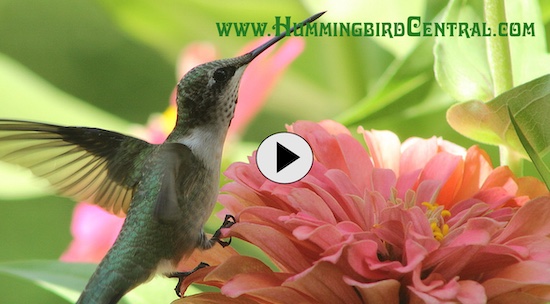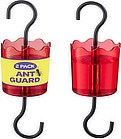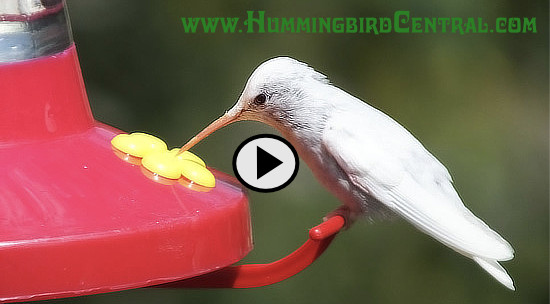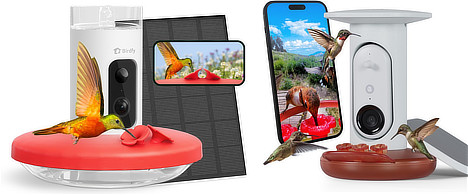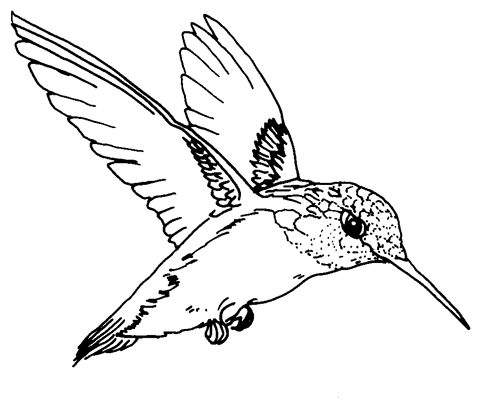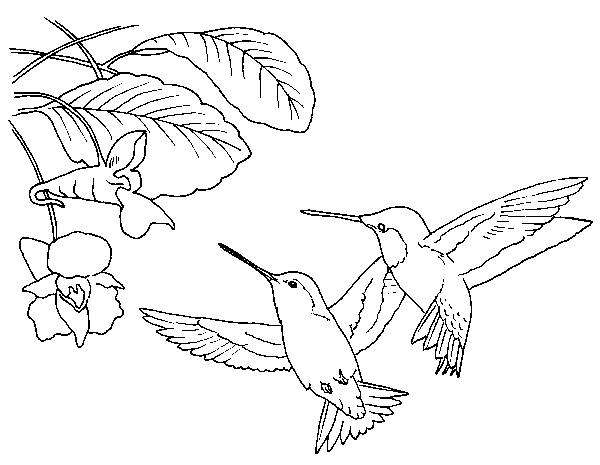Hummingbird FAQs
Hummingbirds comprise the family Trochilidae, among the smallest of birds, with most species measuring in the 3"-5" range.
They feature long slender needlelike bills adapted for reaching deep into tubular flowers. These tiny birds can be found in North America, Central America, South America and many islands in the Caribbean Sea.
What do hummingbirds eat?
Hummingbirds, like other birds and other animals, need food, water, and shelter, the basic necessities of life.
Their diet consists of nectar from flowers (red is the favorite color), and small insects such as aphids and spiders.
Hummingbirds feed in many small meals, consuming small invertebrates and up to twelve times their own body weight in nectar each day.
 Green-crowned Brilliant Hummingbird |
Many plant species rely on hummingbirds for pollination and provide nectar and tiny insects in exchange. Hummingbirds staunchly and aggressively defend a feeding area, or feeder, even when not feeding.
Can hummingbirds walk? No ... they can only fly
The beat of their wings is so rapid, up to 55 times a second, that a "humming" sound is produced, and the wings appear blurred. They are the only bird species that can fly backwards, or even upside down.
Hummingbirds can't walk or hop, but they can shuffle around a feeder with its extremely short legs, which are not very strong.
How fast and how far can hummingbirds fly?
Research indicates a hummingbird can travel as much as 23 miles in one day. However, during migration as they cross the Gulf they may cover up to 500 miles at a time. Their average speed in direct flight is in the range of 20-30mph, and up to three times that fast during courtship dives.
How big is a hummingbird nest?
A hummingbird's nest is very small, usually about 1.5" in diameter. Eggs are likewise small, less than 1" long, about the size of a jelly bean.
The female lays her eggs on different days. The Ruby-Throated Hummingbird lays 2 eggs.
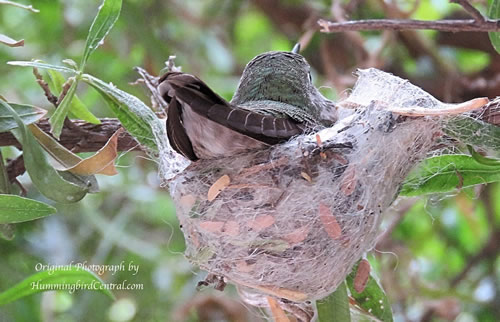 Hummingbird on nest (Photo courtesy of the author) |
Black-chinned Hummingbird, Anna's Hummingbird, Costa's Hummingbird, Calliope Hummingbird, Broad-tailed Hummingbird, Rufous Hummingbird and Allen's Hummingbird all lay 1-3 eggs.
Gestation period is about 16-18 days.
How many hummingbird species are there?
The hummingbird family is very large, with 366 species and 112 genera, according to the International Ornithologists' Union (IOU). Hummingbirds are found only in the Western Hemisphere, with almost half the species living in the "equatorial belt" between 10 degrees north and south of the equator.
Fewer than two dozen species venture into the U.S. and Canada, and only a few species remain year-round. On this website we feature the 18 most common hummingbird species found in North America.
Click here for an alphabetical list of all 366 species of hummingbirds (PDF)
This website also provides detailed information about the Hummingbirds in Central America and Hummingbirds in South America.
Where are hummingbirds found in the United States and Canada?
In the Eastern and Central United States and Canada, the most common species is the Ruby-throated hummingbird. Several species are in the Gulf region.
In the Western United States, one will often find Anna’s, Black-chinned, Calliope, Broad-tailed, Allen’s, White-eared, and Rufous hummingbirds. In Texas and the Southwestern United States, all North American species will be found from time to time.
What is the most common hummingbird in North America?
The Ruby-throated Hummingbird is the most common, and the only species regularly seen over most the eastern United States and Canada. Ruby-throats are the only hummingbird found east of the Great Plains, except for the Rufous.
It is about 3 3/4" in length, and metallic green above. Its notes are a rapid, high-pitched squeaky, chipping sound.
The adult male has a brilliant ruby red throat (gorget), black chin, and deeply notched, forked tail.
The female's throat is white, and immatures are similar in color to the female. The female body is slender, with a blunt, rounded tail with white corners.
The female Ruby-throated and Black-chinned are very similar, but have separate ranges. Males use a repeating "pendulum" arch of flight to attract females.
How big is a Ruby-throated hummingbird?
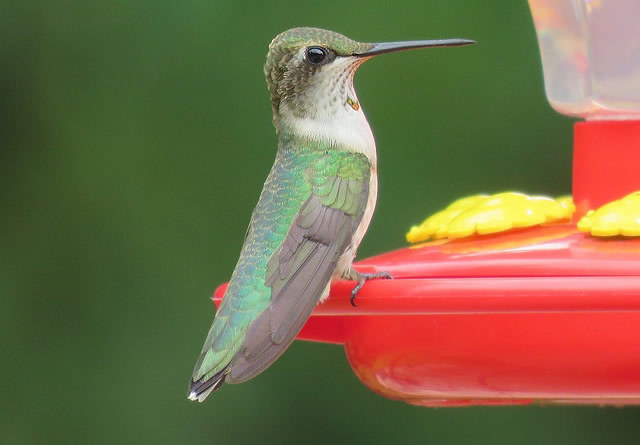 |
They are about 3 3/4" in length. Their weight can range from 2 to 6 g (0.071 to 0.21 oz), with males averaging 3.4 g (0.12 oz) and the slightly larger female averaging 3.8 g (0.13 oz).
How long does a Ruby-throated hummingbird live?
The average life span is estimated by experts to be 3 - 5 years.
Most deaths occur in the first year of life. The record age of a banded Ruby-Throated hummingbird is 6 years, 11 months.
How do we make a hummingbird feeder mix?
When formulating your hummingbird mixture recipe, remember that nectar found in nature is typically in the range of 12%-35% sugar (sucrose). The solution you prepare should be similar to that found in nature.
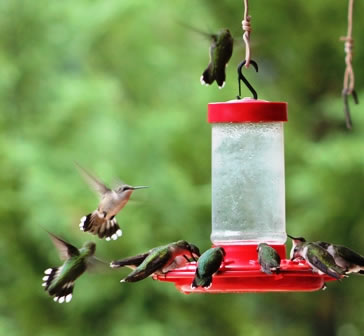 A classic 16-oz First Nature 3051 feeder hung at eave-level ... always a favorite of the hummingbirds! |
We make our own solution, using the recommended mix of four parts water to one part sugar, i.e., 20% sugar. We do not boil the water, but we find that using warmer water helps dissolve the sugar quicker. Note that our water is pure; for those whose water supplies are suspect, boiling water is an option to remove impurities.
We never use red-dye or pre-mixed commercial nectar ... it is just not needed, and it can be harmful to hummingbirds. Just make your own ... it is easy to do!!
What are hummingbird "scouts"?
Many people refer to the first hummingbird sighting of the year or early arrival as being "a scout". Some species of birds, such as Purple Martins, do send a bird in advance of the migrating flock to scout out potential nesting and breeding areas.
However, hummingbirds are loners, and migrate alone. They do not scout out an area, and then return to notify others. So, despite popular theory, there is no such thing as a hummingbird scout.
How far does the Rufous Hummingbird migrate?
The spring migration of the Rufous hummingbird north from Mexico in the spring is through the Pacific states, and the fall migration south is through the Rocky Mountains.
During migration, they can be found in mountain meadows as high as 12,000 feet. Migration paths of the Rufous can span over 3,000 miles.
How many hummingbirds are in the United States and Canada?
The most common species is the Ruby-throated, with an estimated population of 34,000,000. There are an estimated 19,000,000 Rufous Hummingbirds. Read more about hummingbird populations
I saw a hummingbird in British Columbia in the winter. Can it survive in the cold?
Anna's Hummingbirds have the northernmost year-round range of any hummingbird. These hummingbirds are a common resident of the northern Pacific coast, west of the Sierra Mountains, frequently in coastal lowlands. The species breeds from Vancouver, Canada south to northern Baja California and east through southern Arizona.
This hardy bird can be a permanent resident along the Pacific Coast, staying through the winter in many areas where no other hummingbirds are present.
How long to leave up hummingbird feeders in the fall?
During the fall migration, it is recommended that hummingbird lovers leave up their feeders for about two weeks after they sight what they think is their final bird. Just to feed those late-migrating hummers!
Will I see the same hummingbirds next year?
Hummingbirds have an innate ability to remember their favorite feeding locales. Banding experts have shown time and time again that individual hummingbirds return to the same spot year after year.
So enjoy your hummers today ... and hopefully you will see them again next year!
Which country has the most hummingbird species?
Many countries in Central America and South America have dozens of hummingbird species. But Colombia has the most, with 165 species!
What is the largest and smallesthummingbird species?
The Northern Giant Hummingbird and the Southern Giant Hummingbird are the largest species. These two species live in a diverse range of high-altitude deserts and shrublands across Ecuador, Peru, Bolivia, Argentina, and Chile in South America. They measure an astounding 21-22 centimeters (8.3-8.6 inches) in length.
The smallest species is the Bee Hummingbird, endemic to Cuba, with a length of only 5 centimeters (2.0 inches) and a weight of less than 2.0 grams (0.07 oz).
Do hummingbirds molt?
Yes, hummingbirds molt, losing old feathers and replacing them with new ones, much like other species of birds. Molting often happens in the mid-summer, prior to the southbound, fall migration, and after breeding season (when male hummingbirds have near-perfect feathers). But some may start migration before molting begins.
Molting commonly occurs on the body, and not so much on wing or tail feathers.
The annual molt which begins during fall migration is completed during the winter. With their first molt, juvenile males develop their red/purple/pink throats.
I see small hummingbirds on my flowers. What are they?
You may be seeing what are commonly called "Hummingbird Moths" which hover like actual hummingbirds. There are number of species of hummingbird moths, like those shown below. Read more about Hummingbird Moths
 |
Can a Praying Mantis eat a hummingbird?
The answer is "Yes". We have seen it happen on a feeder, and it isn't a pretty sight. As difficult as it might be to imagine, "Mantids" can sometimes capture, kill, and eat a hummingbird. The quick strike of the mantid, on a plant or feeder, can immobilize a hummingbird.
How do I deal with ants on my feeders?
If you are subject to ants, you might want to attach ant-guards, or moats, above your feeders. Some feeders, like the Aspects models, have a small, built-in moat on top that you fill with water. Never use products such as oil or Vaseline on feeders, wires or shepherd hooks to deter ants ... these products are dangerous to hummingbirds. Standalone ant-guards/moats hang above the feeder, like those shown below.
|
||
How do I deal with bees around my feeders?
Make sure your feeders are not leaking. Sometimes moving a feeder, or taking it down for a day or so, may persuade bees to move on!
Bees need to drink water, but can't swim. Many hummingbird watchers create a "bee watering station" by filling a shallow container with small rocks, mixed gravel or sand and filling it with water; placed near feeders, bees will appreciate the feeding spot.
How do I stop my hummingbirds from fighting?
Hummingbirds are prolific defenders of the food source they have found, and claim it as theirs. Whether it is flowers, or a feeder, their protective demeanor is the same. So, how DO you stop the fighting? Basically, you can not, as it is built into their gene pool.
Anthropomorphism is the attribution of human characteristics, emotions, and behaviors to animals ... like calling hummingbirds "bullies".
There are no “hummingbird bullies” and humans should not try to manage them. That bird that we disparagingly refer to as a “bully” is doing precisely what it was created to do.
To minimize fighting some nature lovers will spread their feeders further apart, while others position them closer together. See what works for you! But understand that this is the way hummingbirds operate, and it is their nature to be protective. So, just sit back, relax, and enjoy their antics!
What about man-made hummingbird boxes/houses?
Hummingbirds build their own nests from scratch and do not nest in cavities or man-made, conventional style birdhouses. The female usually builds her nests in trees or shrubs, between 10-50 feet above ground.
Also, they are capable of finding their own nesting materials, and humans do not need to provide "hummingbird supplies" such as thread, fiber or sticks. They build their own nests from feathers, twigs, plant fibers, bits of leaves, spider silk, moss, and lichen. The nests are cup-shaped, and very small.
Why am I seeing fewer/more hummingbirds in my yard?
This is a difficult, probably impossible, question to answer. We honestly don't know why there are fewer, or more, hummers at one particular location or backyard compared to previous years.
There are many factors influencing how many hummers are in one particular area. Temperature variations, storms, flowering levels, migration, etc. all impact populations. Also, they tend to disappear when mating and raising their young. Many nature enthusiasts might see many hummingbirds early in the spring, and then witness a decline in numbers as the birds migrate further north.
The Hummingbird Central website is not run by professional, trained ornithologists, and does not have the resources to conduct detailed, scientific studies about hummingbird population trends. We recommend that those interested in this subject refer to organizations such as Journey North, Cornell Lab of Ornithology and The Audubon Society for studies on hummingbirds and population projections.
How did hummingbirds survive before humans invented feeders?
Hummingbirds survived just fine without human intervention, as they had been doing for centuries!
The first commercially available, backyard hummingbird feeder, the glass "Webster Hanging Feeder", was launched in 1950 by the Audubon Novelty Company of Medina, NY. Prior to then, hummingbirds were on their own to find sources of nectar and small insects.
Many hummingbirds look similar ... how do I tell the difference?
Many hummingbirds DO look alike, and sometimes juveniles and females are really difficult to differentiate. Shown below is a comparison of several species with similar markings and coloration.
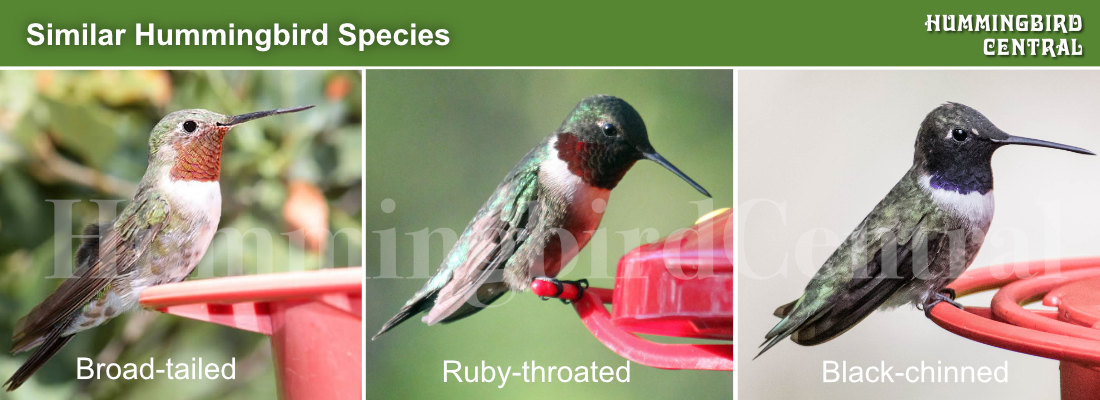
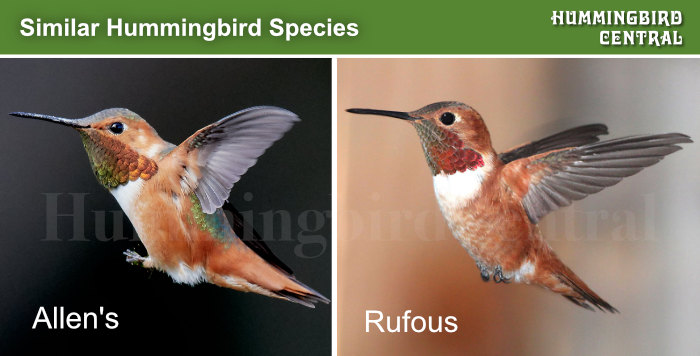
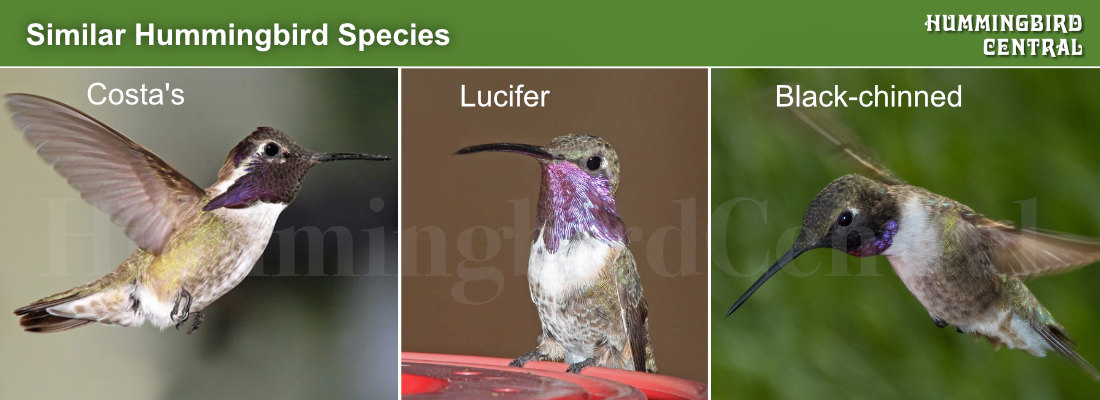
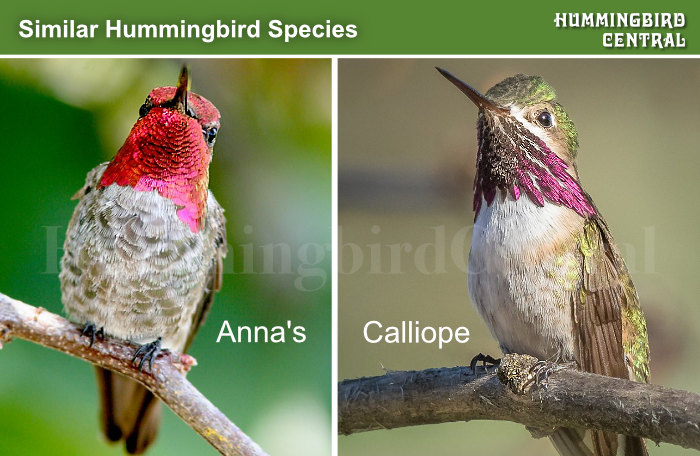
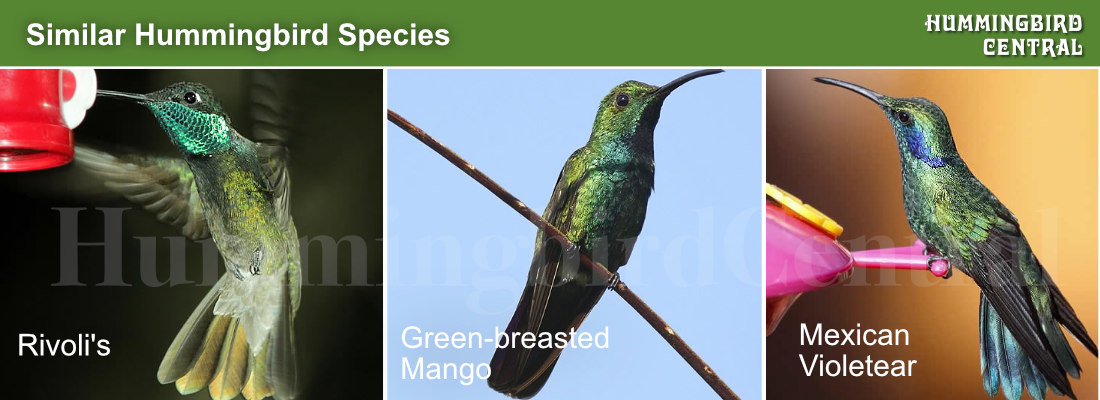
Are there any white Hummingbirds?
While rare, there are indeed white-colored hummingbirds. Read about Albino and white Leucistic Hummingbirds.
Hummingbirds are beautiful, colorful creatures! But some are white, or whitish!
There are three types, a true Albino, and a Leucistic hummingbird ... and a mixture, known as Pied (or Piebald).
This short video highlights some of the albino, leucistic and pied hummingbird sightings which have been submitted by Hummingbird Central website viewers.
It runs only about 4 minutes ... turn up your volume, and enjoy some incredible views of white hummingbirds!
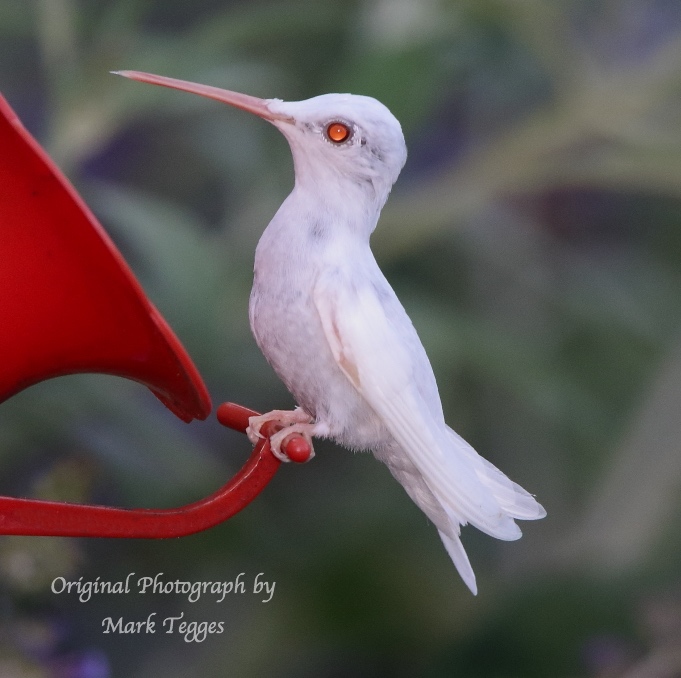 |
Popular Hummingbird Feeders This Year
|
||
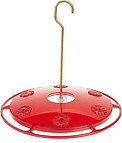 Aspects HummZinger Excel Hanging Hummingbird Feeder with Built-in Ant Moat |
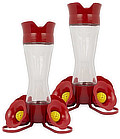 Pinched glass Hummingbird Feeder with built-in ant moat, pack of two feeders |
|
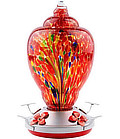 Colorful hand-blown glass Hummingbird Feeder, 32oz, with Ant Moat, Hanging Hook, Rope, & Brush |
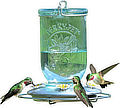 Perky-Pet 785-1SR Mason Jar Vintage Glass Hummingbird Feeder - 32oz Nectar Capacity |
|
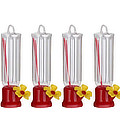 Mini Hummingbird Feeder with single flower, 4-Pack, 2.3oz |
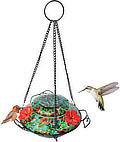 Nature's Way Glass Top-Fill Hanging Hummingbird Feeder |
|
Different designs, features and manufacterers are available to choose from based on the user's preferences and needs. Choose from one or dual cameras, various BlueTooth and WiFi options, video quality, solar power, notifications, night vision and other options. Popular brands include Birfy, Birdbuddy and others. Click below to view various feeders at Amazon. |
||
|
||
 |
| About These Products
The Hummingbird Central website is a participant in the Amazon Services LLC Associates Program, an affiliate advertising program designed to provide a means for sites to earn fees by advertising and linking to Amazon.com and affiliated sites. Amazon offers a commission on products sold through their affiliate links. There is no additional cost to you. Order processing and shipping is done by Amazon. |
How can children learn about hummingbirds?
- Help your children select an attractive feeder for your home garden.
- Teach your children how to make hummingbird mix ... it involves sugar, and water, and is fun!
- Introduce the hummingbird species to your children via an easy to hold and read book. We recommend Stokes "Beginner's Guide to Hummingbirds". It is small, only 4" x 7" and has great pictures of common hummingbirds. It is a good starter book for young children with an interest in nature, yet contains enough identification tips and other information as they grow into teens, and young adults!
- Plant easy-to-grow hummingbird plants like zinnias and marigolds from seeds, watch them sprout, and watch the hummingbirds love them!
- Learn the colors of the hummingbird, and color one yourself, like the ones shown below ...


